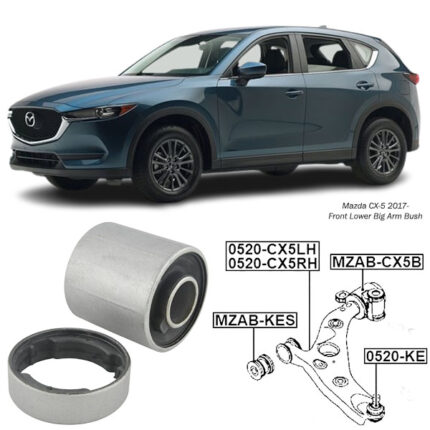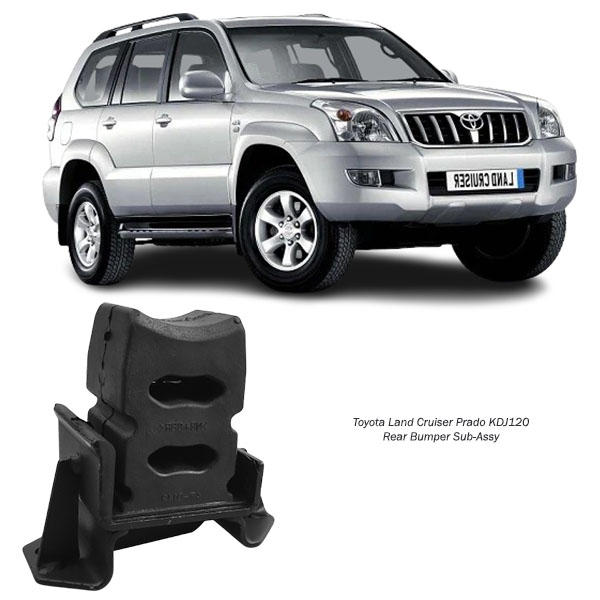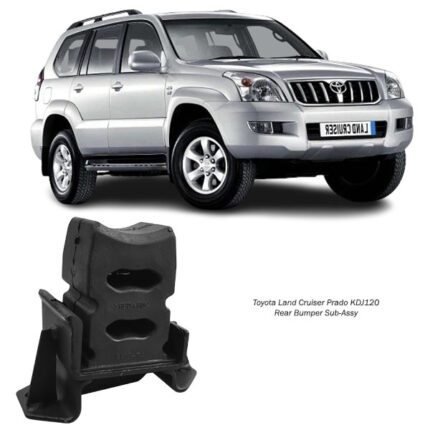-7%
Get Toyota Land Cruiser Prado KDJ120 Rear Bumper Sub-Assy RH 48306-60201 in Kenya
The rear bumper sub-assembly is a critical component of a vehicle’s exterior. It serves both aesthetic and functional purposes, providing protection, aerodynamics, and structural support to the rear section of the vehicle. Whether you’re looking to replace a damaged bumper or upgrade to a more durable one, understanding the rear bumper sub-assembly is essential.
In this guide, we will cover:
What is a Rear Bumper Sub-Assy?
Its Functions & Importance
Common Signs of Damage
Materials Used in Bumpers
Step-by-Step Installation Guide
Maintenance & Longevity Tips
Aftermarket vs. Genuine Parts
What is a Rear Bumper Sub-Assy?
A Rear Bumper Sub-Assembly (often abbreviated as “Sub-Assy”) is the structural framework that supports the outer bumper cover and connects to the vehicle’s chassis. It is designed to absorb and distribute impact energy during a collision, reducing damage to the vehicle’s body and protecting passengers.
This component typically consists of:
Bumper Cover – The outermost layer, often made of plastic or fiberglass.
Bumper Reinforcement Bar – A metal or composite structure that absorbs impact forces.
Energy Absorbers – Foam or plastic components that help dissipate impact energy.
Mounting Brackets & Clips – Secure the bumper to the vehicle frame.
Functions & Importance of the Rear Bumper Sub-Assy
The rear bumper sub-assembly plays multiple crucial roles in vehicle performance and safety:
Impact Protection
-
During a rear-end collision, the bumper absorbs impact forces to minimize damage.
-
Helps protect critical components like the fuel tank, exhaust system, and rear sensors.
Structural Support
-
Acts as a rigid support for the bumper cover, keeping it securely attached to the frame.
-
Prevents the bumper from sagging or misaligning after an impact.
Aerodynamics & Fuel Efficiency
-
Proper bumper design improves the airflow around the car, reducing drag.
-
Some bumpers integrate diffusers for better fuel efficiency and stability at high speeds.
Aesthetic Appeal
-
A well-maintained bumper enhances the visual appeal of the vehicle.
-
Available in different designs, finishes, and materials to match the car’s style.
Integration with Safety Features
Modern bumpers house parking sensors, reverse cameras, and impact detection systems.
-
A properly installed bumper ensures these safety systems function correctly.
Common Signs of a Damaged Rear Bumper Sub-Assy
Over time, the rear bumper sub-assembly can become damaged due to accidents, wear and tear, or environmental exposure. Here are some signs that it might need replacement:
Visible Cracks or Dents – If the bumper cover has cracks or dents, the structural integrity may be compromised.
Misalignment or Loose Fitting – If the bumper appears misaligned or loose, the mounting brackets may be broken.
Unusual Noises or Vibrations – A damaged bumper may cause rattling or vibrations while driving.
Broken or Missing Clips & Fasteners – Loose or missing clips can lead to an unstable bumper attachment.
Compromised Safety Features – If parking sensors or reverse cameras are malfunctioning, the bumper may be misaligned.
If you notice any of these signs, it’s essential to inspect and replace the rear bumper sub-assembly to maintain safety and performance.
Materials Used in Rear Bumper Sub-Assy
The durability and performance of a bumper depend on the materials used. Common materials include:
Polypropylene (PP) – A lightweight plastic that offers flexibility and impact resistance.
Acrylonitrile Butadiene Styrene (ABS) – Stronger than PP, often used in performance cars.
Fiberglass – Lightweight and stiff, but can be brittle upon impact.
Carbon Fiber – Extremely strong and lightweight, used in high-performance sports cars.
Aluminum or Steel Reinforcement Bars – Provide extra strength and support behind the bumper cover.
For daily-use vehicles, polypropylene and ABS are the most common choices due to their balance of durability, flexibility, and cost-effectiveness.
Step-by-Step Installation Guide
If you’re replacing your rear bumper sub-assembly, follow these steps:
Tools Required:
Socket wrench set
Screwdrivers
Trim removal tool
Jack & jack stands
Torque wrench
Installation Steps:
Prepare the Vehicle
-
Park on a flat surface and engage the parking brake.
-
If necessary, use a jack to lift the rear of the vehicle.
Remove the Old Bumper
-
Locate and unscrew the mounting bolts underneath the car.
-
Use a trim removal tool to carefully detach the bumper clips.
-
If your car has parking sensors or cameras, disconnect their wiring harness.
Inspect the Mounting Brackets & Reinforcement Bar
-
Check for any damaged brackets and replace them if necessary.
-
If the reinforcement bar is bent, install a new one for proper impact absorption.
Install the New Rear Bumper Sub-Assy
-
Align the new bumper assembly with the mounting points.
-
Secure it with bolts and clips, ensuring a snug fit.
-
Reconnect any wiring for sensors or cameras.
Tighten & Adjust
-
Use a torque wrench to tighten all bolts to manufacturer specifications.
-
Check for proper alignment and gap consistency.
Test & Verify
-
Ensure that parking sensors, cameras, and reflectors function properly.
-
Take a test drive to check for any loose parts or vibrations.
Aftermarket vs. Genuine Rear Bumper Sub-Assy – Which One to Choose?
When replacing your rear bumper, you’ll find genuine (OEM) and aftermarket options. Here’s a comparison:
| Feature | Genuine OEM | Aftermarket |
|---|---|---|
| Fit & Compatibility | Perfect Fit | May require modifications |
| Durability | High-Quality Materials | Varies by brand |
| Warranty | Covered by Manufacturer | Usually No Warranty |
| Cost | More Expensive | More Affordable |
If you want reliability and a perfect fit, genuine OEM bumpers are the best choice. However, if you’re looking for a cheaper alternative and don’t mind minor modifications, a high-quality aftermarket bumper may be a good option.
Follow us on Facebook for more parts.





Reviews
Clear filtersThere are no reviews yet.